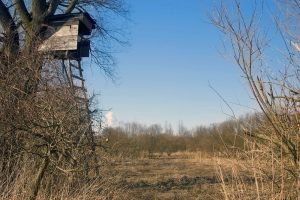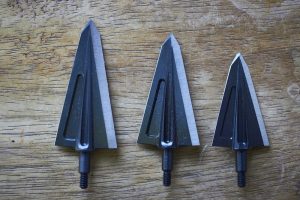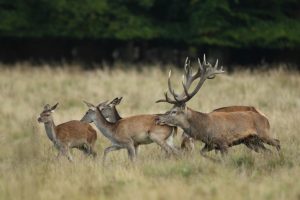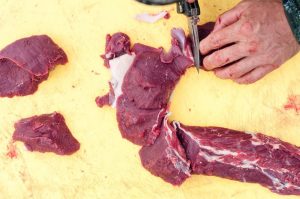Written by Guest Contributor on The Prepper Journal.
Editors Note: A guest submission from Mitchell, founder of Musket Hunting, a timely article as hunting season is upon us. As always, if you have information for Preppers that you would like to share and possibly receive a $25 cash award like Mitchell, as well as being entered into the Prepper Writing Contest AND have a chance to win one of three Amazon Gift Cards with the top prize being a $300 card to purchase your own prepping supplies, then enter today!
The fall is here again. If you are a passionate deer hunter, you must be ready to go into the woods and tag your trophy winning buck. But before you step into the woods, I will like to share a few tips that can help you to improve your chances of killing the big game you’ve always dreamed about. Here are some expert tips on how to sharpen your shooting skills, avoid spooking your buck, when to hunt, and how to process deer meat without incurring high deer processing cost.
Practice Effectively
Every passionate deer hunter practices his bow hunting skills. But the question is “do you practice effectively?” You should practice shooting your bow while you are putting on your camo, boots, harness and other hunting gear. This helps you to discover the type of noises you will make in the woods. It also allows you to know if any of your equipment will stop you from tagging your buck.
Make sure you do your practice in a typical hunting position. If you know you will hunt from a tree stand, practice from there not on the ground. Remember that the angles at which you will shoot will be different in each position. So you should set up your tree stand and practice shooting from it. Shoot at targets directly in front of you and shoot at targets that are not. This will help you to prepare for the different types of situations you will encounter during hunting.
Keep Out the Noise
Silencers are designed to help us reduce the noise our bows make. But placing many silencers on it will not cut out all the noise completely. So what else can you do to eliminate noises connected with hunting? First, you must understand that removing your bow from the rest, attaching a release, drawing out an arrow, and setting your foot for the short all produce a significant amount of noise. So you should practice all these actions frequently to ensure you can do them silently. Putting foam around your bow rest can make it very silent. Also, placing a small carpet under your feet will make them quiet.
Sharpen Your Broad-heads
Your bow naturally attracts more attention than your arrow. But it is the broad-head that helps you to kill the deer. Although modern broad-heads are far more effective than what we had a few years back, they must be kept razor sharp. If you have just shot a broad-head into a foam target, you must not use for hunting immediately after. Sharpen it first.
Hunt in the Pre-Rut Season
Expert hunters, who target trophy winning buck, know that the rut is not really the best time to tag them. Many advanced trail cameras have tracked a buck within a hunting area throughout the season but it ends up being shot up to 2 miles away. Mature bucks are smart and they need to be studied carefully before you can shoot them successfully. For the following reasons it is better to tag a hit list buck during the pre-rut.
* Bucks Stay at Home in the Pre-Rut: You can only shoot at your target buck if he is at home. Pre-rut is the time when the buck will be more active in the daylight and stay within the boundaries of his home range. With the day-to-day levels of testosterone still rising, the buck will be prepared to come out of its bedding or staging areas in search of a doe.
* Bucks Respond to Calls at This Time: Bucks would have spent most of September and the early days of October, scraping and rubbing to prepare for fights. The levels of testosterone in the buck will make him come out if he hears a call from a challenger. So if you see your buck cruising, make a challenger grunt and get ready for a quick shot. This type of call is quite effective when your hunting stand is close to thick cover or there is something to obstruct the buck’s view. This will make him move close to investigate.
Crop Harvest Will Draw the Deer Out: If your hunting area is close to a corn field, the harvest time will offer a unique advantage. Many of these corn fields are harvested in the second half of October and there will be a lot of waste grain to draw the bucks out of their cover. At this time, the bucks will be compelled to bed inside woodlots and walk out in broad daylight. This makes them more predictable.
Target Bedding Areas in the Morning
During the pre-rut season, you need to make the best use of each time of the day, particularly the early hours. For instance, a bedding area is the ideal place to hunt in the morning during the pre-rut. During this season, bucks are actively searching for does at this time. Even if you get to your stand at dawn and you don’t see any buck coming out of the bedding area. Be patient. You could still see one come out as late as 10 am to find a doe.
Learn How to Process Your Venison
After you’ve shot your deer, you need to know how to process deer meat so you can preserve it and enjoy its unique taste, flavor and texture. Before you carry or drag the deer into your truck or camp site, make sure it is dead. This will help to prevent serious injuries. Then you must do field dressing immediately to remove the internal organs of the deer before transporting it.
At your camp, you need to hang it up, preferably with the head at the bottom so the blood can drain out completely. While the deer is hanging, cut the rib cage open using a hack saw. Then put a 2″x 4″ stick into it to keep it open for proper air circulation. The hanging position also offers a perfect chance to take off the skin. Use a sharp knife to obtain the best result. While taking off the skin, be careful not to allow fur to get on the meat. Take off the head, the tail and the legs from the knee downwards. Then rinse the meat thoroughly. If you are a new hunter, you may need to get help from a more experienced hunter or get a professional to do it and pay the deer processing cost.
Deer meat needs to age for at least three to seven days. During this time, the meat must be kept at a temperature that is close to, or less than 40 degrees F, to avoid spoilage. If the temperature is greater than 40 degrees, then you should not age it for more than three days. Aging the meat helps to make it tender and it improves the flavor. After you are through with aging, cut up the meat and store it in a freezer. To keep predators and scavengers away from your encampment, dispose of the carcass at a place far away from it. The other area natives will consider this a feast and efficiently dispose of it for you.
Conclusion
These ideas and tips will help you tag the type of buck you’ve always wanted during this hunting season. They are simple and easy to apply. Keep them in mind as you prepare to step into the woods.
The post 6 Things That Will Make You a Better Bow Hunter appeared first on The Prepper Journal.
from The Prepper Journal
Don't forget to visit the store and pick up some gear at The COR Outfitters. How prepared are you for emergencies?
#SurvivalFirestarter #SurvivalBugOutBackpack #PrepperSurvivalPack #SHTFGear #SHTFBag





No comments:
Post a Comment